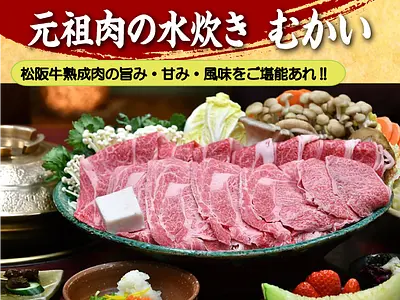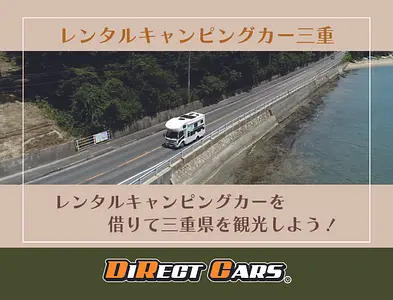Enjoy a walking tour of world heritage sites such as the Kumano Kodo Iseji Route, Matsumoto Pass, Shichirimihama Beach and Onigajo in the surrounding area! Introducing spots and ways to enjoy mountain climbing that you can safely visit even if you are new to mountain climbing or bring your children with you.
掲載日:2022.03.12
Matsumoto Pass is one of the lowest passes on the Kumano Kodo Ise Road, at 135 meters above sea level, and can be safely climbed by mountain climbing beginners and those with small children, such as elementary school students. And the charm of the area around "Matsumoto Pass" is that you can see "Shichiri-Mihama" and "Onigajo" and other World Heritage sites all at once. In this issue, we will introduce how to get to & enjoy each of these spots!
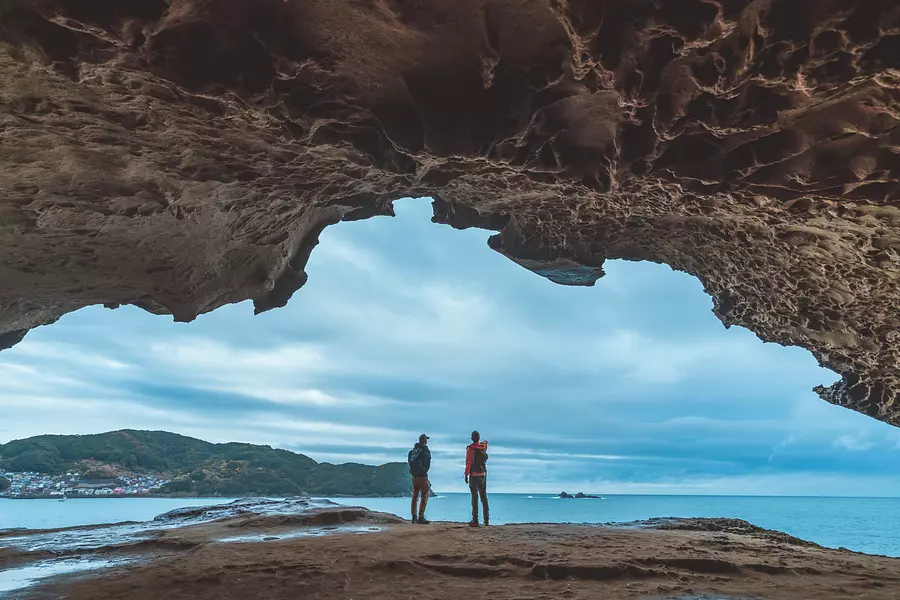
table of contents
- 1. Departing from Onigajo Center!
- 2. Matsumoto Pass
- Matsumoto Pass climbing entrance
- wash over
- Edo period stone pavement
- Stone pavements and the ``tuna riot'' of the Meiji era
- Jizo with gunshot wounds
- 3. Onigajo hiking course
- An arbor overlooking the World Heritage Shichirimihama Beach
- World Heritage Site, Onigajo
- 4. Soothe your tired body from walking in the hot springs
- Yunoguchi Onsen
- Iruka Onsen Hotel Toryuso
- Kumano Inn Umihikari
1. Departing from Onigajo Center!
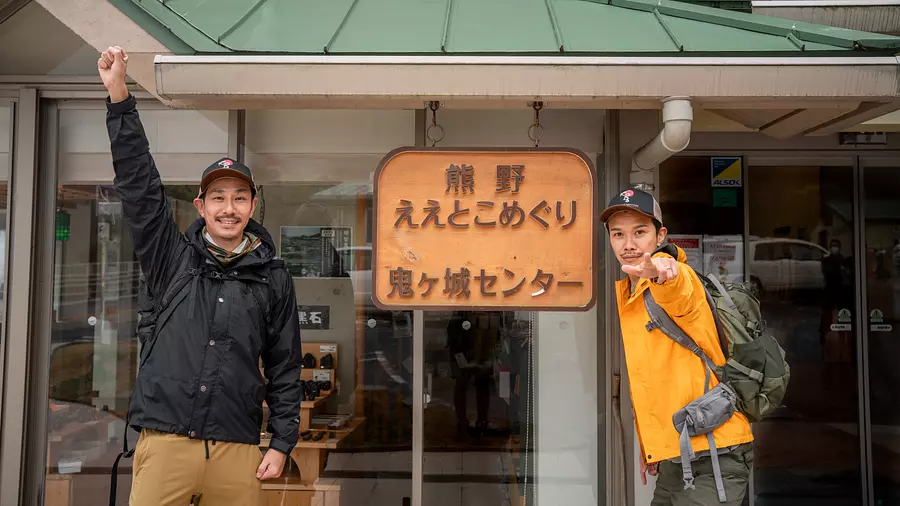
This time, the people who will be introducing the charms of Matsumoto Pass and the surrounding area are popular YouTubers "Beat Naito" and "Norigoto" (*Click on the link for their profiles)
The two will start from Onigajo Center and head towards Matsumoto Pass.
*Access to Onigajo Center from Nagoya direction
・By car, arrive from Nagoya IC via Kumano Odomari IC (approximately 2 hours 40 minutes)
・Take the limited express Nanki from JR Nagoya Station and get off at JR KumanoCity Station (about 3 hours), then take the Mie Kotsu bus from KumanoCity Station and get off at "Onigajo Higashiguchi", which is a short walk (about 3 minutes walk).
* Onigajo Center has a free parking lot (for 70 regular cars), which can be used as the closest parking lot to the Matsumoto Pass climbing entrance!
*There are no restrooms after entering Matsumoto Pass. Please use the restrooms inside Onigajo Center or the parking lot.

Onigajo Center is a facility with a shop selling local souvenirs and specialty products, and a restaurant where you can enjoy dishes made with KumanoJidori(TheLocalBrandChicken) and Kumano sea bream.
You can also get tourist pamphlets and maps for surrounding spots, including Onigajo.
*The Kumano Kodo Iseji Guide Map, which includes the Matsumoto Pass walking route, may not be available. Please download it from one of the sites below before going out.
○Download from the Kumano Kodo Iseji website
○Download from the HigashiKishu Regional Promotion Corporation website
Each site also has useful information about the Kumano Kodo and surrounding areas, so be sure to check it out before your trip.
2. Matsumoto Pass
Matsumoto Pass climbing entrance
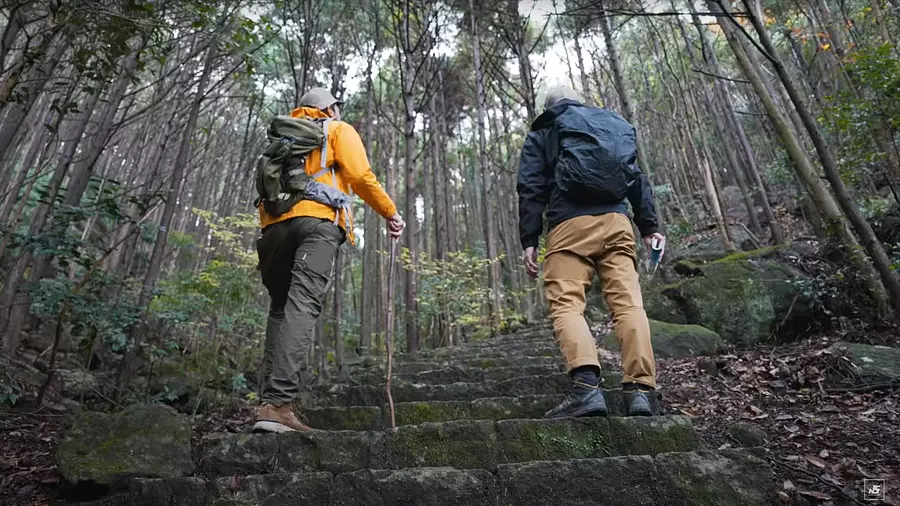
The Matsumoto Pass climbing entrance is about a 10-minute walk from Onigajo Center. Among the Kumano Kodo Iseji routes, Matsumoto Pass is the lowest at approximately 135 meters above sea level, making it a route that beginner mountain climbers and children of elementary school age can climb.
The Kumano Kodo was registered as a World Heritage Site in 2004 as part of the "Sacred Sites and Pilgrimage Routes of the Kii Mountains," and is a road that connects IseJingu Grand Shrine and the Kumano Sanzan (Kumano Hongu Taisha, Kumano Hayatama Taisha, and Kumano Nachi Taisha). .
It is an ancient road with a long history, and was apparently used as a daily road until the road in front of the entrance and Onigajo pedestrian tunnel were constructed in the Taisho era. It is also an important road that supported people's lives.
*While walking, be sure to hydrate and take breaks frequently!
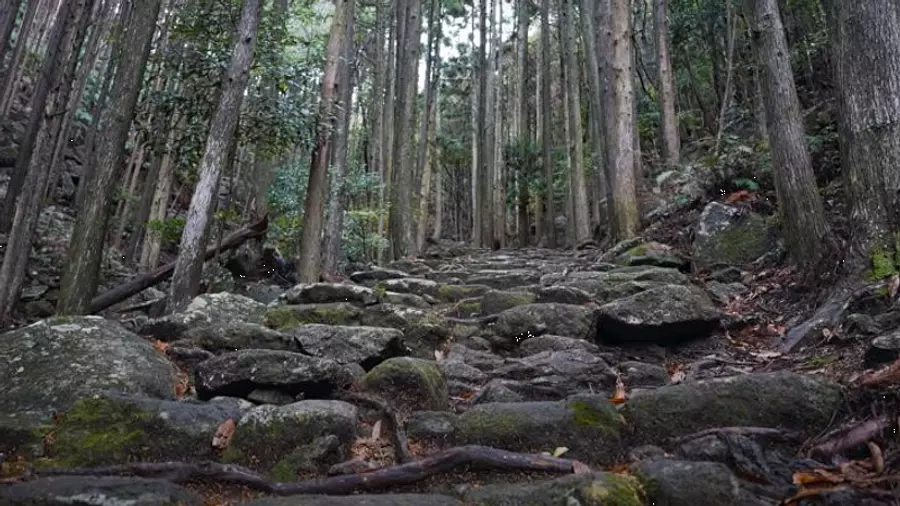
The weather on the day they visited Matsumoto Pass was rainy. Despite the unfortunate weather, Kumano Kodo has beautiful scenery that can only be enjoyed on rainy days. The rain-soaked cobblestones look even more glossy, and the scent of damp tree roots and leaves heightens the mystical atmosphere of Kumano Kodo.
*On rainy days or after the rain, your feet can be slippery, so be sure to wear trekking shoes and be careful when walking!
wash over
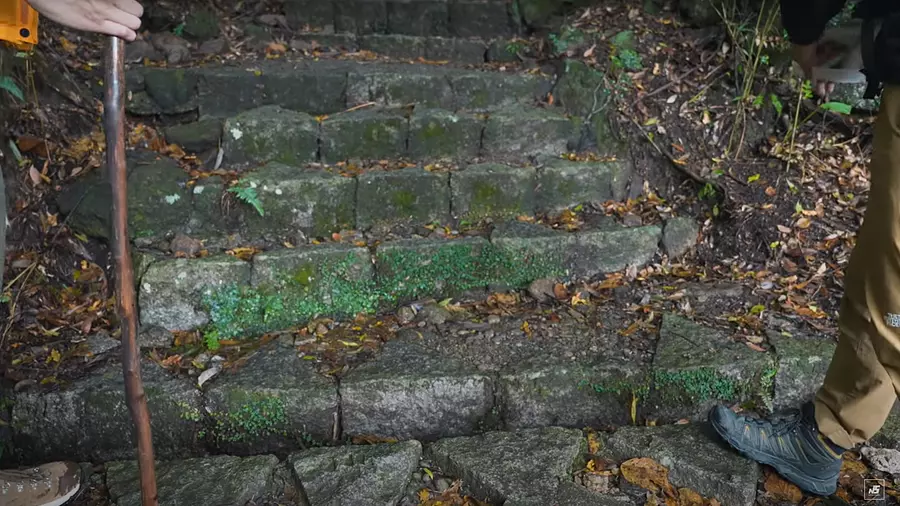
The groove-like thing at your feet is a construction method called ``washikoshi,'' which is common throughout the Kumano Kodo. The HigashiKishu region, where the Kumano Kodo is located, is one of the rainiest areas in Japan, so the path was designed to reduce the force of rainwater flowing from the top of the mountains and direct it to the valley side to prevent the path from collapsing.
You can see the ingenuity unique to areas with high rainfall to keep roads safe.
Edo period stone pavement
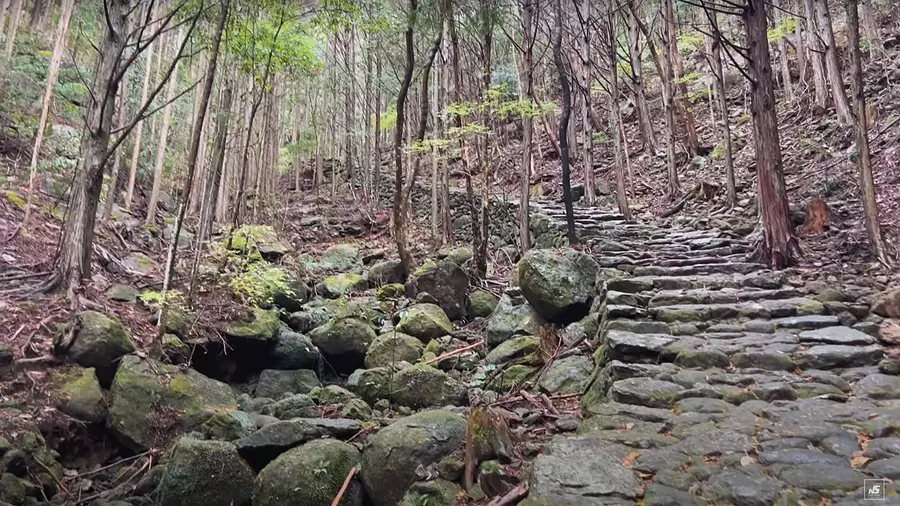
This is a stone pavement that was laid in the Edo period. The structure is called ``Nozura Random Layer'' and is made to be sturdy so that it will not collapse even in the event of an earthquake or heavy rain. By the way, ``Nozaramim'' means cutting and stacking stones from the mountain. The side of the road is lined with splendid stone walls.
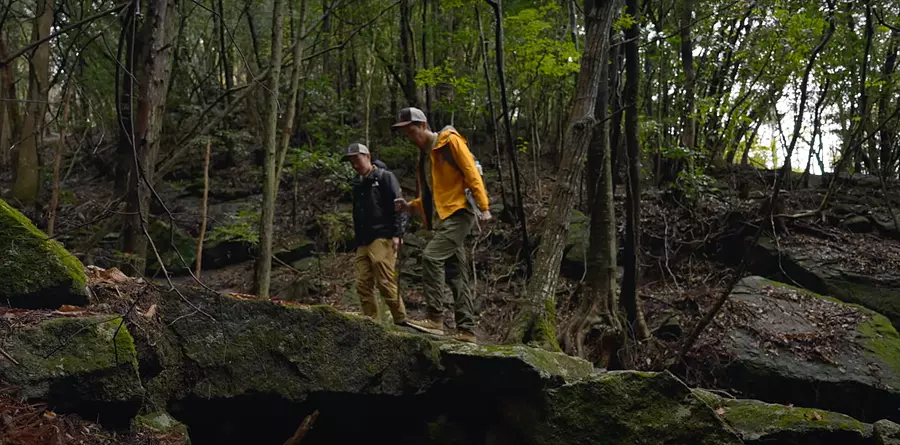
In the middle of the road, there is a large monolith built like a bridge. It is said that the stones of various sizes laid out on the Kumano Kodo were transported by hand by people in the past, using levers and other tools.
The two were surprised and wondered, ``Did someone carry a stone this size?'' How many people can work together to move it?
Stone pavements and the ``tuna riot'' of the Meiji era
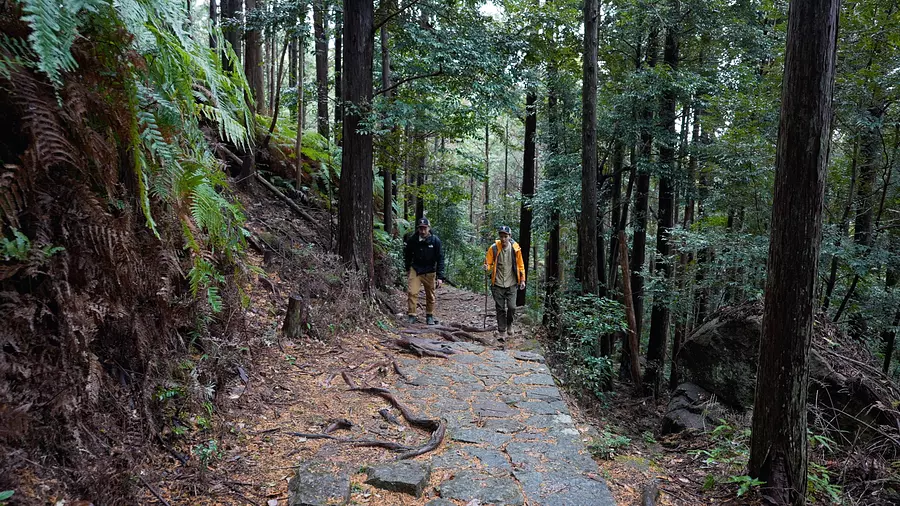
The two of them are walking on a stone pavement that was laid in the Meiji era. Actually, there is an interesting story related to this stone pavement.
In the first year of the Meiji era, when about 300 tuna were landed in this area, fishermen fighting over fishing grounds caused a commotion. As punishment for causing a commotion, the magistrate's office forced the fishermen to spend six months building stone pavement.
Jizo with gunshot wounds
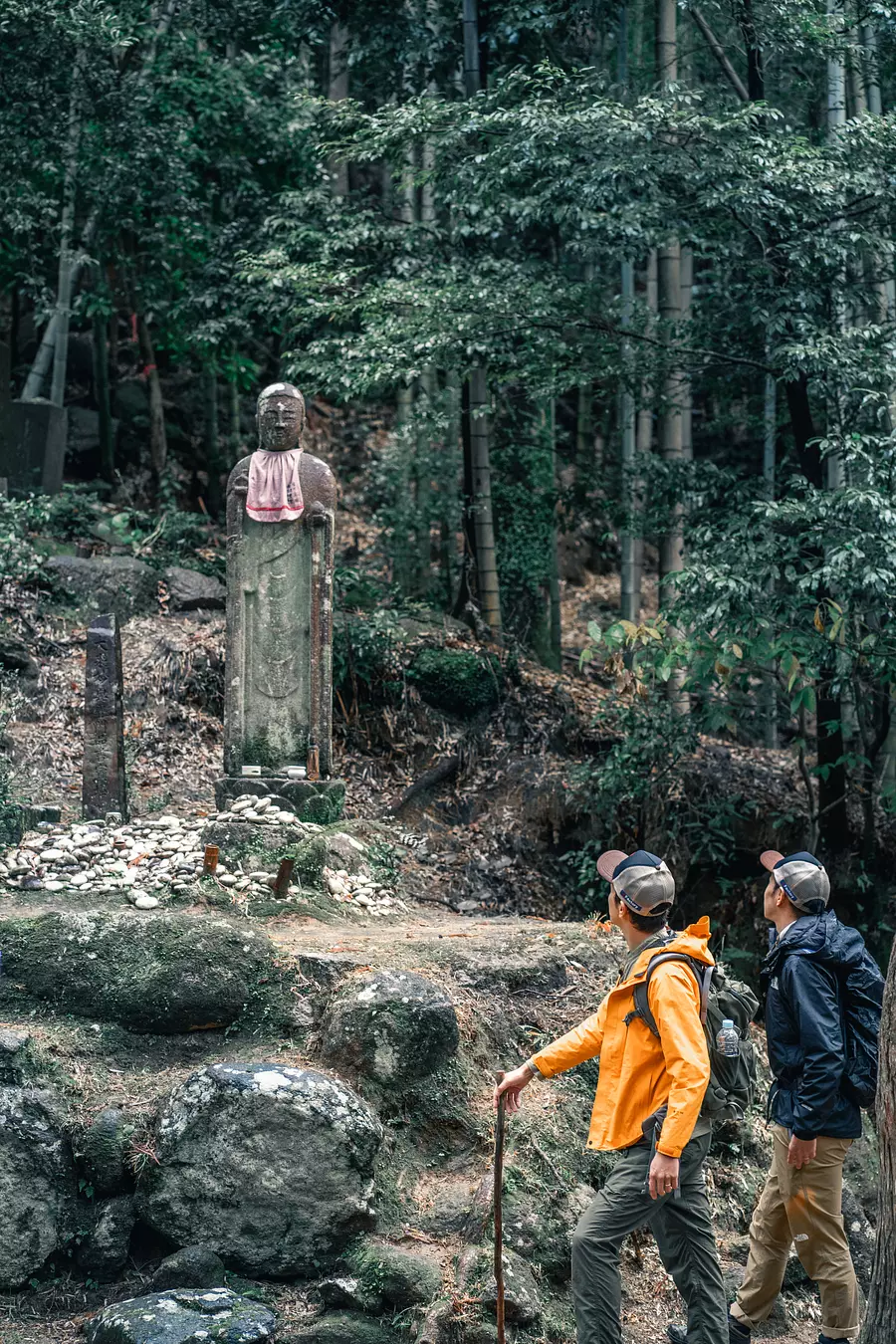
A large Jizo statue stands near the top of Matsumoto Pass.
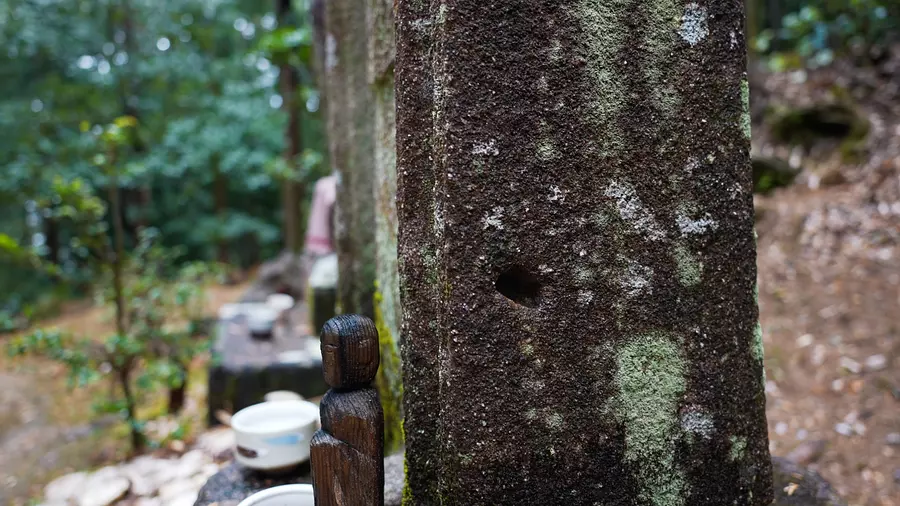
There is a large hole at the feet of the Jizo statue. This is said to be a gunshot wound caused by Shinzaemon Ouma, a gun hunter, passing through a mountain pass in the middle of the night during the Genroku era (1700), when he mistook the Jizo statue for a monster or monster and shot it.
↓ Click here for the realistic 360 degree video
Behind the large Jizo statue with a gentle face, a lush bamboo forest spreads out. The beautiful scenery will soothe your soul.
3. Onigajo hiking course
An arbor overlooking the World Heritage Shichirimihama Beach
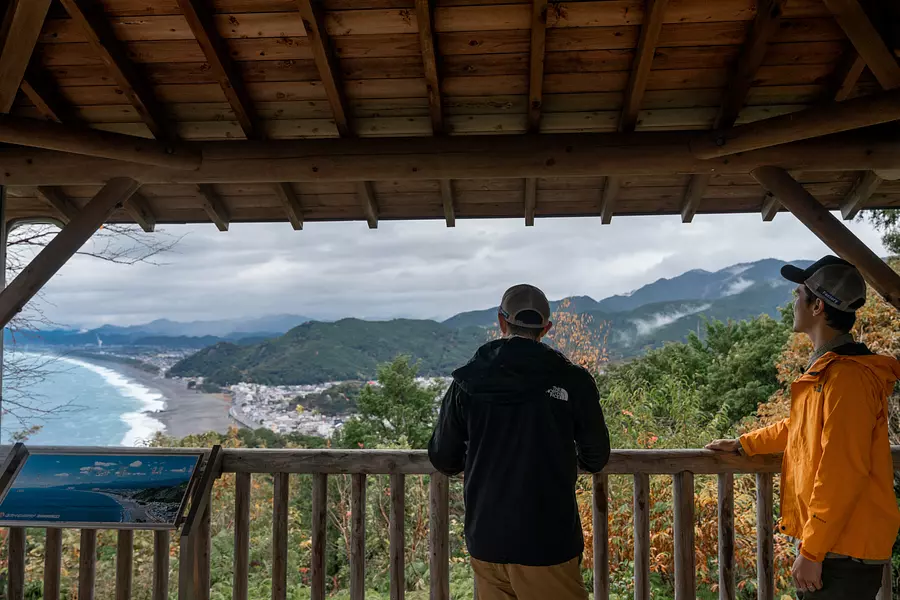
From the fork near the top of Matsumoto Pass Onigajo proceed to the hiking trail and walk about 200 meters to a pavilion.
(If you follow the directions for Matsumoto Pass at the fork in the road, you will pass into the center of KumanoCity.)
From the gazebo, you can see the world heritage site Shichirimihama, the mountains along the coast, and KumanoCity. ``It's a great view!'' the two of them said, enjoying the magnificent view from the arbor.
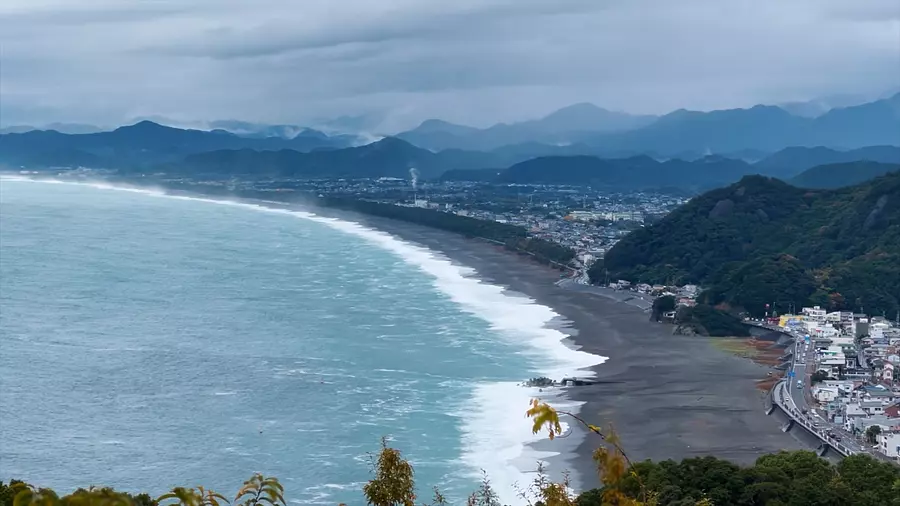
ShichiriMihamaBeach is Japan's longest gravel beach, stretching approximately 22 kilometers from KumanoCity to KihoTown. It is known as kachiji and has been selected as one of Japan's ``100 Best Beaches in Japan,'' ``100 Best Japanese Natural Sites to Preserve in the 21st Century,'' and ``100 Best White Sand and Green Pines in Japan.''
When you look at Shichirimihama from the gazebo, you can enjoy seeing the length of the coastline and its gentle curves.
↓ Click here for the realistic 360 degree video
World Heritage Site, Onigajo
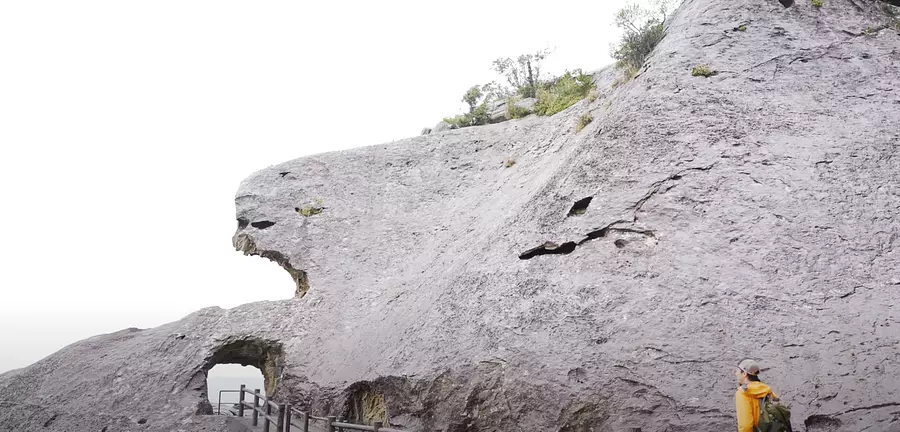
If you go down Onigajo hiking course from the gazebo, you will arrive at Onigajo. Onigajo is a scenic spot with sea breeze erosion caused by rough waves, wind and rain, and large tuff cliffs raised by several large earthquakes. In 1935, it was designated as a national natural monument, and in 2004, it was also registered as a UNESCO World Heritage Site.
When they saw the dynamically carved quay, they were moved and said, ``It looks like something you'd see in a role-playing game!''
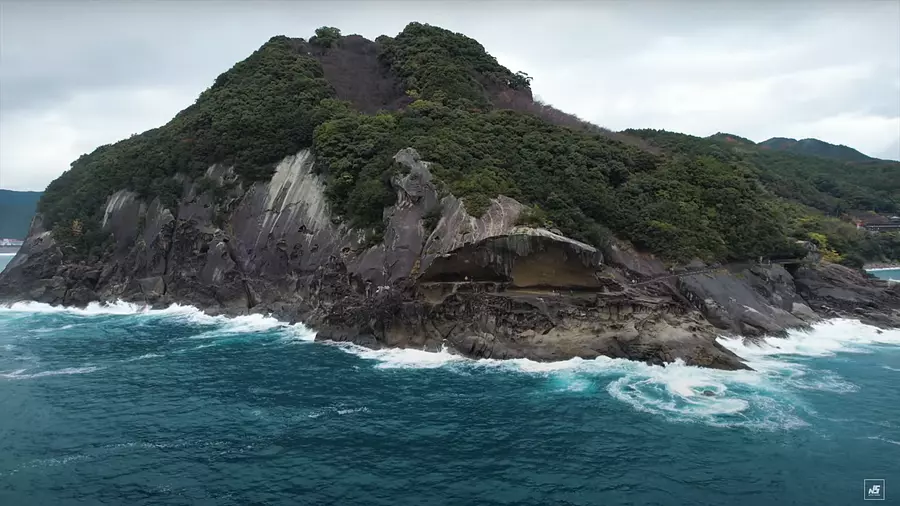
There is a promenade along the coastline, and the spectacular view of strangely shaped rocks continues for about 1 km. When viewed from the sea side, you can clearly see the large quay of Onigajo.
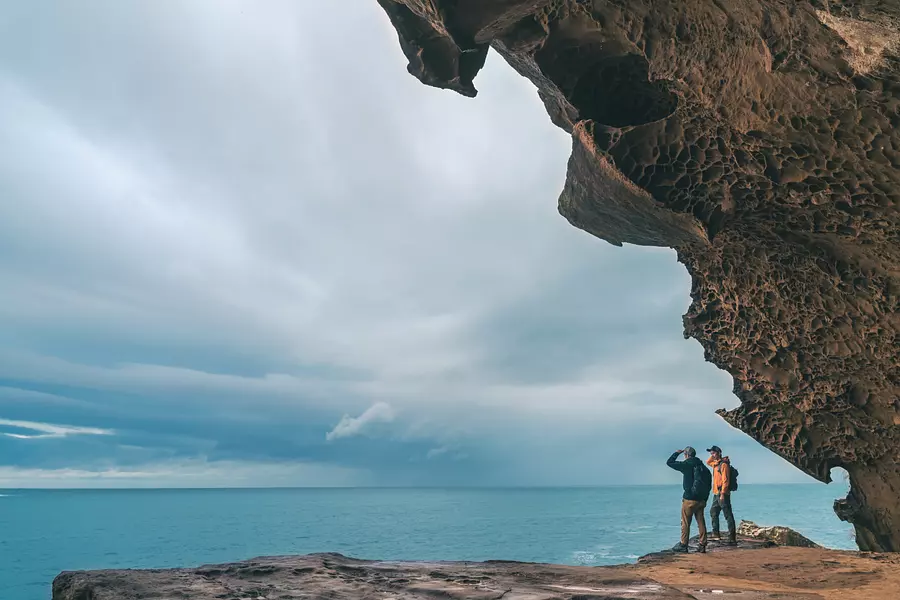
This time I walked slowly and it took about 3 hours.
The two of them look back on this walk.
``Matsumoto Pass was easy to walk because it's not high up! I'd like to walk with my children when they're in elementary school. There are many scenic spots, so I think they'll be happy.'' ``The scenery at Onigajo and Shichirimihama is dynamic and nice. Hey! Matsumoto Pass also had a great atmosphere soaked in the rain."
Norigoto's YouTube channel also shows how he enjoys walking around Matsumoto Pass, Shichirimihama, and Onigajo, so be sure to check it out!
4. Soothe your tired body from walking in the hot springs
There are several day trip bathing facilities around Matsumoto Pass (KumanoCity) that we introduced this time. After walking the Kumano Kodo, soak in a hot spring to soothe your tired body.
Yunoguchi Onsen

Yunoguchi Onsen is a hot spring building made from Kumano cedar that has a pleasant wood scent, and you can enjoy the hot spring water flowing straight from the source without adding any water or heating it.
Iruka Onsen Hotel Toryuso

We also recommend Iruka Onsen Hotel Soryuso, which is located 6 minutes by car or 10 minutes by trolley train from Yunoguchi Onsen. You can enjoy the view of the clear stream "Kitayama River" from the open-air bath.
If you would like to know more about Yunoguchi Onsen and Iruka Onsen, please also check out this report article.
Kumano Inn Umihikari

At Kumano no Yado Umihikari, you can relax and enjoy the hot springs gushing out from the grounds in the large public bath.
Umihikari also has a kids' room that can be used by day-trippers. For more information, please see this report article.
Article production: MSLP

